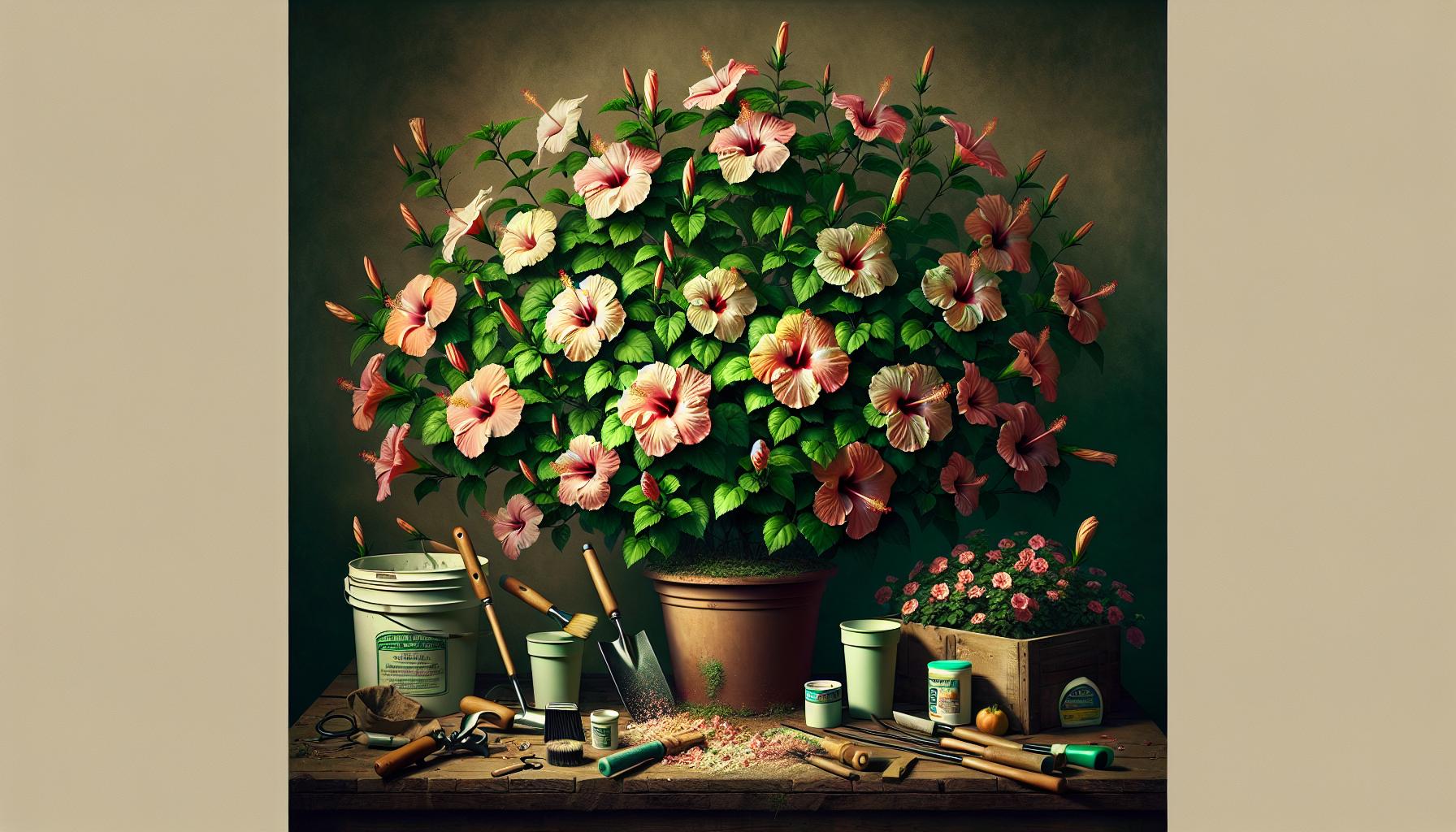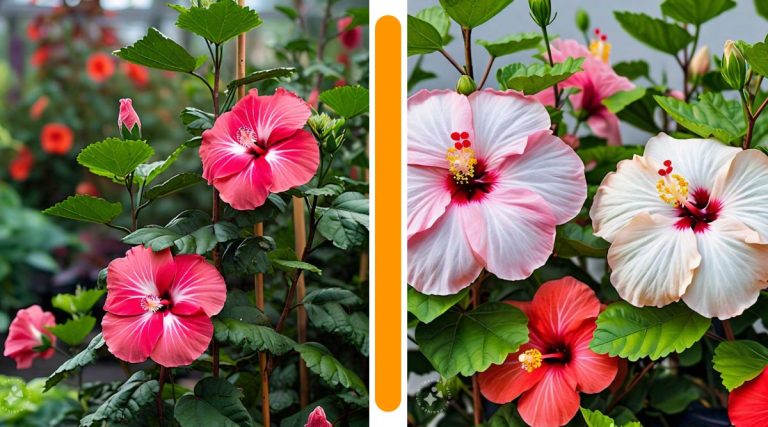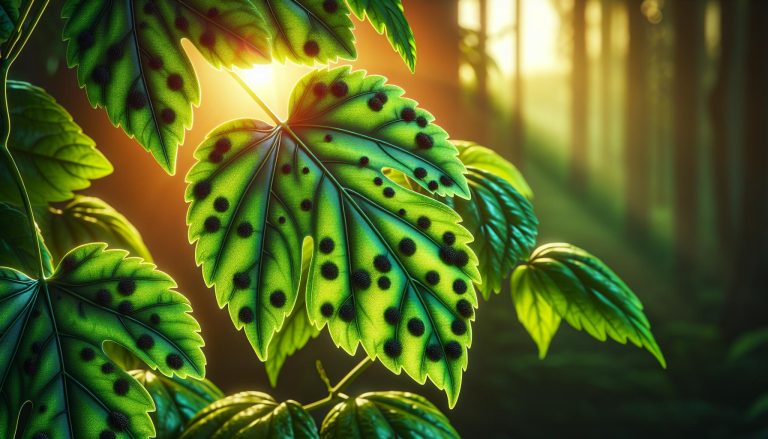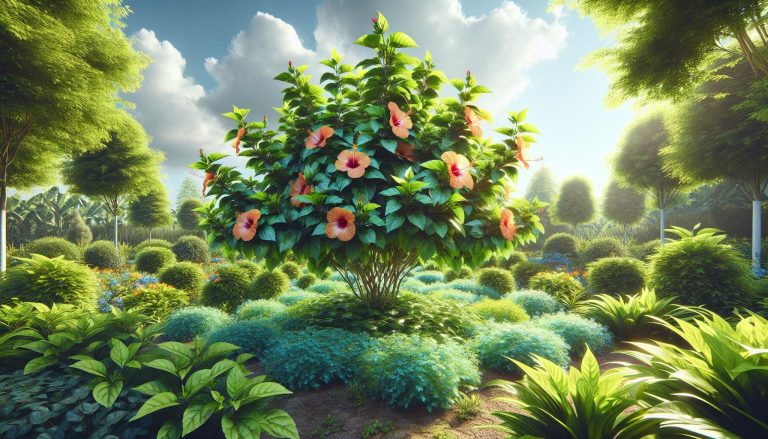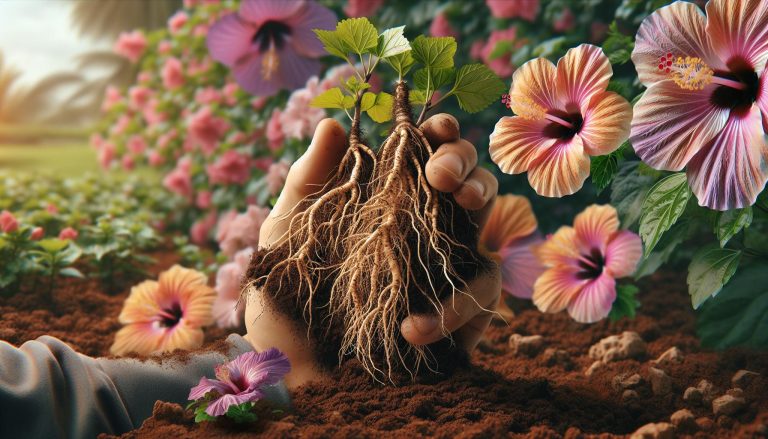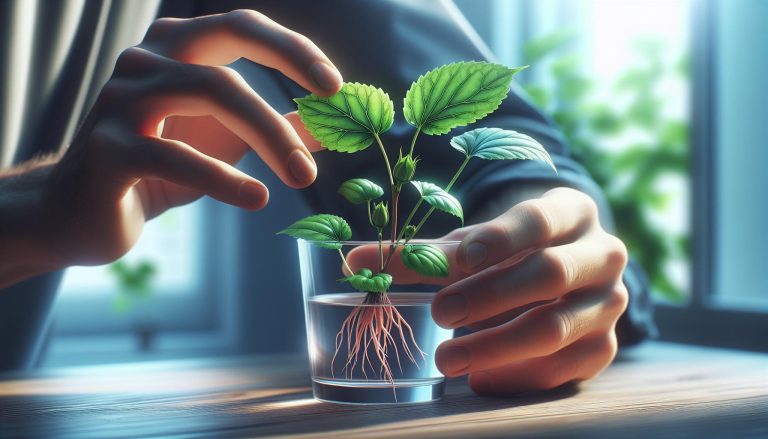Do Hibiscus Bloom All Year? Secrets to Year-Round Flowers
As avid gardeners and plant enthusiasts, we’ve always been captivated by the vibrant beauty of hibiscus flowers. Their large, colorful blooms can transform any garden into a tropical paradise. But one question that often crosses our minds is whether these stunning plants grace us with their presence all year round. It’s a topic that’s not only interesting but also crucial for those planning their garden landscapes and wanting a splash of color throughout the year.
In our quest to bring clarity, we’ve dived deep into the world of hibiscus. Whether you’re a seasoned gardener or a budding plant lover, understanding the blooming cycle of these flowers can significantly impact your gardening choices. So, let’s embark on this floral journey together, exploring the secrets behind the blooming patterns of hibiscus and how you can make the most of their vibrant beauty.
Key Takeaways
- Hibiscus plants are categorized into two main types: tropical hibiscus, which can bloom year-round in ideal warm conditions, and hardy hibiscus, which bloom seasonally from late spring to early fall and go dormant in winter.
- The blooming cycle of hibiscus depends on several factors including sunlight exposure, consistent temperature, adequate watering, regular pruning, and proper fertilization. Understanding these requirements is essential for maximizing bloom periods.
- Geographic location and climate play significant roles in determining whether hibiscus can bloom all year. Tropical regions favor year-round blooms for tropical hibiscus, while temperate regions may require strategies like indoor management during colder months for non-stop flowering.
- Regular care and maintenance, such as selecting the right planting location, ensuring proper soil conditions, and implementing targeted pruning methods, are crucial for encouraging vibrant and frequent blooms in hibiscus plants.
- Certain varieties of tropical hibiscus are known to bloom continuously in optimal conditions, while hardy hibiscus varieties offer large, impressive flowers during their bloom season but require a dormant period in winter.
- Addressing common challenges like pest infestations, diseases, and nutrient deficiencies promptly is key to maintaining healthy hibiscus plants capable of producing stunning flowers potentially all year round, depending on the variety and climate.
Understanding Hibiscus Blooming
Types of Hibiscus
In our exploration of the vibrant world of hibiscus flowers, we find that understanding the types of hibiscus is crucial in demystifying their blooming patterns. Primarily, hibiscus plants fall into two categories: tropical and hardy.
Tropical hibiscus, as the name suggests, thrives in warm climates and can bloom year-round if the conditions are ideal. Locations with consistent temperatures above 60°F (15°C) allow tropical hibiscus to showcase their flowers throughout the year, making them a perpetual feature in such landscapes.
Hardy hibiscus, on the other hand, is adapted to a wider range of climates and typically has a specific blooming season, usually from late spring through early fall. Unlike their tropical counterparts, hardy hibiscus plants go dormant in winter, which means they won’t offer blooms during the colder months but will return with vibrant colors when the season turns.
Understanding these distinctions helps gardeners and enthusiasts select the right type of hibiscus for their gardens, depending on the blooming cycle they prefer and the climate in which they are gardening.
The Hibiscus Life Cycle
Diving deeper into the enigmatic beauty of hibiscus flowers, it’s essential to grasp the life cycle of a hibiscus plant to fully understand its blooming potential. Typically, a hibiscus flower follows a yearly cycle of growth, bloom, and dormancy, especially the hardy varieties.
During the growing season, hibiscus plants focus on producing lush foliage and, subsequently, flowers. Individual flowers on a hibiscus plant might only last a day or two, but with a healthy plant, these blossoms can appear in succession over several months. The peak blooming period often occurs in the summer months, when daylight hours are longest and temperatures are conducive to growth.
After the blooming period, as temperatures drop, hardy hibiscus plants prepare for dormancy. They shed leaves and retreat into their roots, conserving energy to survive the winter. With the arrival of spring and warmer temperatures, the cycle begins anew, with the plant breaking dormancy, sprouting new foliage, and eventually producing the season’s blooms.
Gardeners aiming to achieve a year-round display with hibiscus will benefit from combining both tropical and hardy varieties in their gardens, seamlessly bridging the blooming gap between seasons to enjoy continual blooms. Thus, a deep understanding of the hibiscus life cycle and types empowers us to optimize our gardening strategies, ensuring a vibrant hibiscus display throughout the year, climate permitting.
Do Hibiscus Bloom All Year?

The question of whether hibiscus bloom all year is particularly relevant for those seeking to maintain vibrant gardens across all seasons. As we’ve established, the answer varies significantly depending on the type of hibiscus plant in question: tropical hibiscus can potentially bloom year-round under the right conditions, while hardy hibiscus are season-specific bloomers. Let’s dive deeper into the dynamics that influence their blooming patterns.
Factors Influencing Hibiscus Blooming
Several key elements play pivotal roles in the blooming capabilities of hibiscus plants:
- Sunlight: Hibiscus plants thrive with ample sunlight. They need at least 6 to 8 hours of direct sunlight each day to produce blooms. Less sunlight means fewer flowers.
- Temperature: Tropical hibiscus varieties require warm temperatures to continue their bloom cycle throughout the year. In contrast, hardy hibiscus plants need a period of colder temperatures to go dormant and subsequently bloom.
- Watering: Consistent, adequate watering supports blooming in hibiscus plants, though overwatering can be detrimental.
- Pruning: Regular pruning encourages growth and can lead to more frequent blooming periods. Pruning should occur after the blooming cycle to prepare the plant for its next growth phase.
- Fertilization: Hibiscus plants benefit from regular fertilization, which supplies essential nutrients for flower production. Fertilizers high in potassium are particularly beneficial for enhancing bloom quality.
Understanding and adjusting these factors to suit the specific needs of the hibiscus variety in your garden can help maximize blooming periods, thereby achieving a more constant display of vibrant colors.
Geographic and Climate Considerations
The ability of hibiscus to bloom all year also heavily depends on geographic location and local climate conditions:
- Tropical Regions: In these areas, tropical hibiscus plants have the potential to bloom continuously due to the consistently warm temperatures. Gardeners in these locations enjoy colorful displays throughout the year without the need for indoor management during cooler months.
- Temperate Regions: For gardeners in temperate zones, achieving year-round blooms requires a bit more strategy. Here, hardy hibiscus varieties that bloom from late spring to early fall are popular. Tropical hibiscus can be grown but may need to be moved indoors or provided with a greenhouse-like environment during the winter to continue blooming.
- Variable Climates: In areas with varying climates, gardeners might adopt a combination of care tactics, such as using protective measures against cold for tropical varieties and capitalizing on the natural bloom cycles of hardy varieties during their active seasons.
Maximizing Hibiscus Blooms

Understanding the nuances of hibiscus care can significantly influence their blooming frequency and intensity. By focusing on suitable planting locations, dedicated care and maintenance, and proper pruning techniques, gardeners can encourage their hibiscus plants to produce vibrant and frequent blooms. Let’s dive into these strategies to help you achieve the most out of your hibiscus plants.
Suitable Planting Locations
Identifying the ideal location for planting hibiscus is crucial for blooming success. These plants thrive in environments that offer full to partial sunlight, receiving at least six hours of direct sunlight daily. The quality of soil also plays a significant role, with hibiscus preferring well-draining, slightly acidic to neutral soil conditions. When choosing a planting spot, ensure it’s sheltered from strong winds, which can damage the plant and its blooms. In colder climates, positioning hibiscus against a south-facing wall can provide additional warmth, extending the blooming season.
Care and Maintenance Tips
To maximise hibiscus blooms, consistent care and maintenance are essential. Watering needs are at the forefront, with hibiscus requiring regular, deep watering to establish a strong root system, yet it’s critical to avoid waterlogging. Mulching helps retain soil moisture and keeps roots cool. Fertilization plays a pivotal role in bloom production, and utilizing a high-potassium fertilizer every few weeks during the growing season encourages vibrant flowers. Temperature is another factor to monitor, especially for tropical hibiscus, which flourish in warmer conditions. During winter, hardy hibiscus should be protected from the cold to ensure their survival and subsequent blooming in the spring.
Pruning for Better Blooms
Pruning is instrumental in enhancing hibiscus blooms. For tropical varieties, pruning should occur in late winter or early spring, before the onset of new growth. This encourages the plant to develop more branches, which leads to an increase in flower production. Hardy hibiscus, on the other hand, can be pruned back to about 4-6 inches above ground level in late winter or early spring to promote vigorous growth and blooming. Removing dead flowers and branches throughout the growing season also stimulates new blooms and maintains the plant’s aesthetic appeal. Correct pruning not only supports the health of the hibiscus but also maximizes its blooming potential.
By implementing these strategies, gardeners can nurture their hibiscus plants to achieve spectacular and ongoing blooms, enriching their garden’s visual appeal and creating a vibrant floral spectacle.
Varieties That Bloom Year-Round

Following the detailed insights into maximizing hibiscus blooms, it’s pivotal to acknowledge certain varieties of hibiscus that adorn gardens throughout the year. Distinguishing between tropical and hardy varieties underscores the adaptability and bloom periods of these exquisite plants.
Tropical Hibiscus
Tropical hibiscus, known scientifically as Hibiscus rosa-sinensis, stands out for its ability to bloom year-round, contingent upon its environment. These plants thrive in warmer climates where temperatures seldom dip below 50°F. Tropical hibiscus varieties boast a broad spectrum of colors, including red, orange, yellow, pink, and white, enhancing the garden’s palette throughout the year. Notable for their glossy leaves and vibrant, sometimes multi-colored flowers, these varieties demand consistent sunlight, moderate watering, and regular fertilization to sustain their flowering cycle. Key examples include the ‘President’s Red’, a striking red variety, and ‘Double Orange’, known for its lush, double-layered orange blooms. Ensuring these plants receive ample light and protecting them from cooler temperatures can lead to uninterrupted blooming, even in regions with mild winters.
Hardy Hibiscus Varieties
Contrary to their tropical counterparts, hardy hibiscus varieties, such as Hibiscus moscheutos, endure colder climates and can bloom from late spring through early fall, depending on the specific variety and planting zone. Although they don’t offer year-round flowers, hardy hibiscus varieties produce large, eye-catching blooms that can measure up to 12 inches in diameter. These plants, often referred to as perennial hibiscus, need a dormant period in winter to thrive and return with vigor in the blooming season. Key varieties like ‘Lady Baltimore’ and ‘Kopper King’ showcase an array of colors, from soft pinks to deep reds, and feature distinctive, deeply lobed leaves. By selecting the right variety for the specific climate and ensuring they’re well-cared for, gardeners can enjoy the spectacular blooms of hardy hibiscus varieties for the majority of the year.
Our exploration of hibiscus varieties illustrates the importance of selecting the appropriate type based on climate, garden conditions, and desired bloom period. By understanding the distinct characteristics of tropical and hardy hibiscus varieties, gardeners can make informed decisions to cultivate a thriving, visually appealing garden adorned with mesmerizing hibiscus flowers throughout the year, or as long as the climate permits.
Common Challenges with Hibiscus Blooms

Following our exploration of maximizing hibiscus blooms through suitable planting locations and meticulous care, we now delve into common challenges that may hinder these vibrant flowers from displaying their full potential throughout the year. Addressing issues such as pest infestations, diseases, and nutrient deficiencies is pivotal in maintaining healthy, blooming hibiscus plants.
Pest and Disease Management
Pest infestations and diseases can severely impact the health and blooming capability of hibiscus plants. Among the most prevalent pests are aphids, spider mites, and whiteflies, which sap the plant’s strength by feeding on its sap, leading to weakened blooms or even the complete absence of flowering. Similarly, fungal infections like root rot and rust can stifle growth and reduce blooming frequency.
Our approach to managing these challenges involves regular monitoring and prompt intervention. We recommend using insecticidal soap or neem oil sprays to combat pest infestations, applied directly to the affected areas. For fungal issues, ensuring proper drainage and air circulation around the plants can prevent the onset of diseases. If infections occur, applying fungicides according to label instructions may be necessary to safeguard the plant’s health and blooming capability.
Addressing Nutrient Deficiencies
Nutrient imbalances can also detract from the hibiscus’s ability to bloom consistently. These plants thrive in nutrient-rich soils, with particular emphasis on elements such as nitrogen, phosphorus, and potassium. A deficiency in any of these key nutrients can lead to poor growth and limited blooming.
To counter nutrient deficiencies, our strategy includes the application of a balanced, slow-release fertilizer tailored to the needs of blooming plants. This ensures a steady supply of essential nutrients, promoting vigorous growth and abundant flowering. Moreover, incorporating organic matter into the soil can enhance its fertility, further supporting the hibiscus’s blooming potential.
Through attentive pest and disease management alongside diligent nutrient supplementation, we equip gardeners with the essential tools to overcome common challenges, paving the way for their hibiscus to exhibit stunning blooms year-round.
Conclusion
We’ve explored the vibrant world of hibiscus flowers, uncovering the secrets to enjoying their beauty year-round. By adopting the right care practices and tackling common challenges head-on, we’re equipped to keep our hibiscus thriving. It’s clear that with a bit of effort and knowledge, these stunning blooms can be a constant delight in our gardens. Let’s embrace the journey of nurturing our hibiscus, confident in our ability to foster an environment where they can flourish throughout the year. Together, we’ll ensure that the allure of hibiscus flowers never fades, bringing joy and color to our lives every day.

